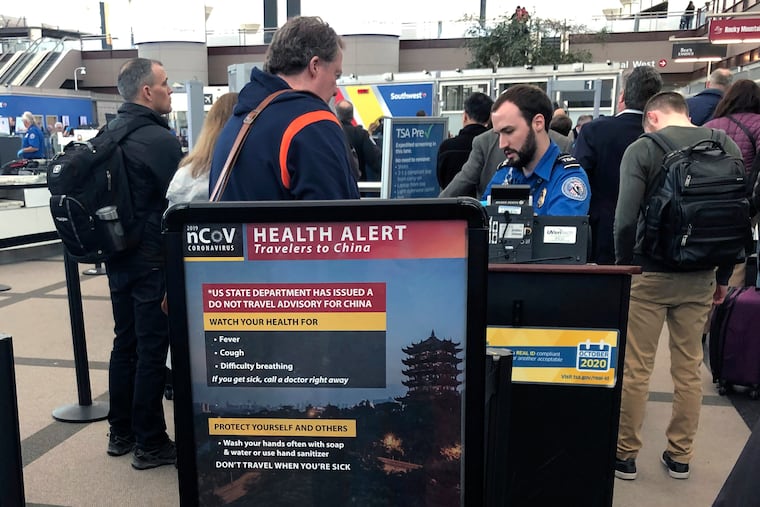Coronavirus is spreading, but no telling how many people have it | Opinion
"We’re probably six months out from having a good picture,” one epidemiologist said. In the meantime, the public needs better information.

Three months since the first cases of a new coronavirus pneumonia appeared in Wuhan, China, it is now a global outbreak. Yet, despite over 90,000 infections worldwide (mostly in China), the world doesn’t have a clear picture of the crisis.
A smattering of scientific papers and government statements have begun to sketch an outline. The Chinese National Health Commission reported that more than 1,700 medical workers there had contracted the virus as of Feb 14. (That’s alarming.) The Chinese Center for Disease Control and Prevention estimated 80% of those infected have a mild illness. (That’s comforting.)
Last week, a joint World Health Organization-China mission announced the death rate in Wuhan was 2%-4%, but only 0.7% in the rest of China — a difference that makes little scientific sense.
The WHO complained that China has not been sharing data on infections in health-care workers. Last month, the editors of the journal Nature called on researchers to “ensure that their work on this outbreak is shared rapidly and openly.”
In all likelihood, some scientists out there have good, if not definitive, answers. But the lack of consistent and reliable information is startling. In an era when we get flash-flood warnings on phones and weekly influenza statistics from every state, why is data on the new coronavirus so limited?
Science, politics, and pride have conspired to keep vital, potentially lifesaving knowledge under wraps.
It began early. A Chinese physician, Li Wenliang, on Dec. 30 posted on social media about a few people with unusual pneumonia. Though lab scientists were already sequencing the virus, he was “warned and reprimanded” by local officials for rumor-mongering, and the “illegal activity of publishing false information online.” Li later died of the illness.
There is a tradition in China (and likely elsewhere) for local authorities not to report bad news to their superiors. During the Great Leap Forward, officials exaggerated harvest yields even as millions starved. More recently, officials in Henan province denied that there was an AIDS epidemic spread through unsanitary blood collection practices.
Even when Beijing urges greater attention to scientific reality, compliance is mixed. On Feb. 13, the Communist Party secretaries of Wuhan and Hubei province lost their jobs over their botched handling of the crisis. As the virus took hold, doctors were not wearing proper protective equipment. Sick people, thinking they had only a cold, didn’t seek medical attention. And travelers continued to spread the new pathogen.
» READ MORE: Penn student in Wuhan: How my life has changed since coronavirus | Perspective
“Early on, management was less than optimal in Hubei, and they’re paying for that now,” said Ian Lipkin, an epidemiology professor at Columbia’s Mailman School of Public Health, who has been advising the Chinese government since the SARS outbreak.
There were, of course, genuine barriers to understanding what was happening in Wuhan: Pneumonia cases are not unusual in winter. Lipkin pointed out that it took many months for U.S. health officials to recognize HIV as a new virus, despite gay men turning up at alarming rates with unusual pneumonias and skin cancers.
Scientific competition has also slowed reaction and response, experts fear — leading to the extraordinary editors’ plea in Nature. For a young researcher, a paper in Nature or the New England Journal of Medicine is career gold. Scientific prestige may encourage perfecting data for peer review, but preparedness requires rapid dissemination of information.
Scientists in various countries — China, Japan, and more — are presumably gathering large amounts of data daily about the new virus. The world deserves to see more of it.
For example: Did the infection of those 1,700 health workers in China occur before they knew to wear protective equipment? Which procedures invite exposure? Answers help protect frontline workers.
Likewise, how many travelers who tested positive aboard the Diamond Princess and got sent to the hospital were really sick? How many had minor symptoms? How many just needed isolation?
» READ MORE: Philly TV anchor: Being Asian doesn’t mean I have coronavirus | Perspective
Finally, public health researchers need more transparency about how officials are monitoring this epidemic. What is China’s surveillance strategy among the general population? In-country surveillance may reveal a large pool of people with mild or no symptoms at all.
Lipkin noted that because cases observed early in an epidemic are the most severe, early mortality estimates tend to be high. As more information comes out, death rates are likely to fall. “We’re probably six months out from having a good picture,” he said.
Compared with the situation in 2003, when it took about five months for the Chinese central government to acknowledge a crisis associated with SARS, the flow of information has clearly improved. But since then, travel and commerce between China and the rest of the world have increased manifold. The spread of information needs to keep up with that new reality.
Elisabeth Rosenthal worked as an emergency room physician before becoming a journalist. A former New York Times correspondent, she is editor-in-chief of Kaiser Health News, where a version of this piece first appeared. @RosenthalHealth